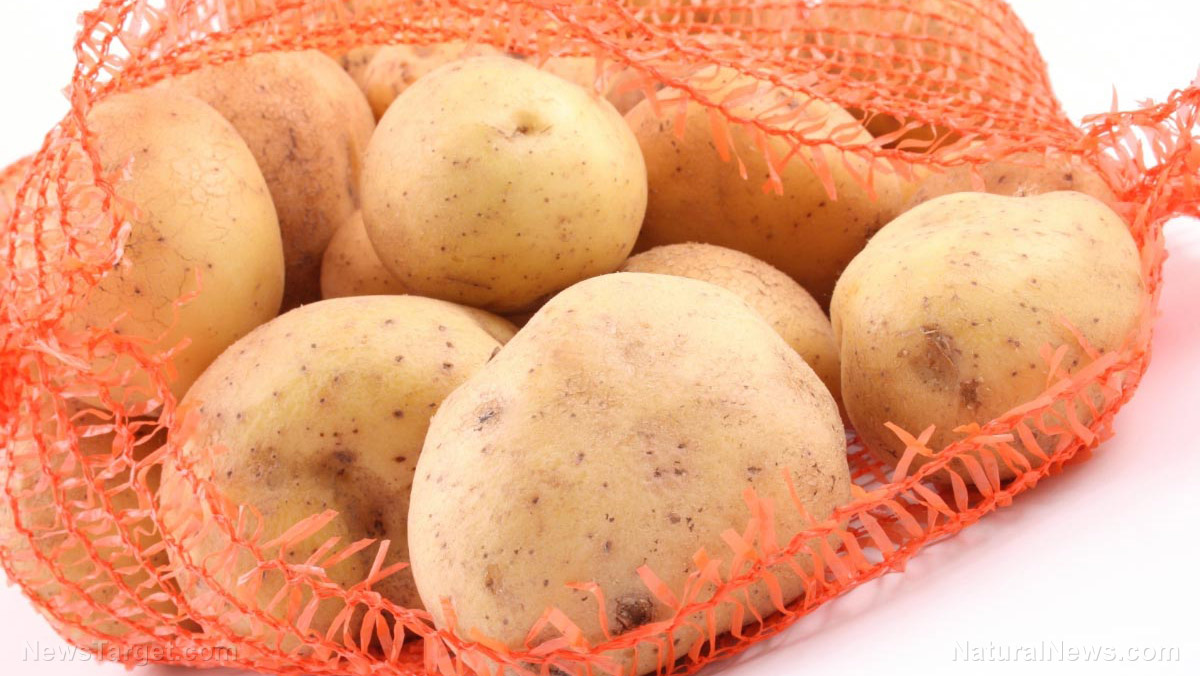
Advertisement
A root cellar is an excellent way to store food without the use of electricity or preservation methods. Preppers and homesteaders who grow their own food can benefit greatly from the use of root cellars, especially if you produce more than what you can store in the refrigerator or on canning shelves.
A root cellar is also fairly easy to build, which makes it an excellent option for modern-day disaster preparedness and homesteading. Plus, well-insulated and structurally sound root cellars are able to keep a cool temperature year-round, which is why it can maintain the freshness of foods for months at a time.
However, not all fresh produce do well in a root cellar. Adequate knowledge of foods that store well can not only prevent spoilage but also help you avoid unnecessary wastes. Here are eight fruits and vegetables that you can grow yourself and store in a root cellar.
Leafy greens
Leafy green vegetables like kale, spinach and cabbage store well in a root cellar as long as there are no apparent wilted leaves. Harvest leafy greens with the roots still attached and store on a slatted shelf. To prevent spoilage, regularly prune the vegetables. Depending on the variety, leafy greens can be stored for three to four months.
Bulb vegetables
Bulb vegetables like onions and garlic can last a long time when stored in a root cellar. To maximize its shelf life, wrap each bulb in newsprint or hardware cloth. Don’t use plastic bags or storage containers since bulb vegetables need to breathe. You should also store the bulbs in a dry area away from sunlight. When stored properly, onions and garlic can last for five to eight months.
Root vegetables
Root vegetables like carrots, turnips, potatoes and beets do exceptionally well in root cellars. However, you’ll want to cut off the leafy tops of the vegetables since leaves wilt quickly. Keep each type of root vegetable in a box that contains moist soil, peat or moss. Place each vegetable in layers and use the sand or whichever material to separate the layers. Depending on the variety, root vegetables can last for three to six months.
Cruciferous vegetables
Cruciferous vegetables like broccoli and Brussels sprouts do not store as well as root or bulb vegetables. But with appropriate preparation, you can easily enjoy stored cruciferous vegetables for two to three weeks. To prevent spoilage, store cruciferous vegetables in a separate corner of the root cellar and regularly prune the leaves.
Dried beans
Beans naturally have a long shelf life, which can be extended further in a root cellar. To maximize the shelf life of beans, allow the beans to mature on the plant, then harvest the plant itself by the roots. Let the plant cure for one to two weeks and then freeze the beans to prevent possible bacterial growth. Place the beans in an airtight container and store it in the root cellar. When stored this way, beans can last for several months up to a year.
Pumpkins
Pumpkin can also be stored in root cellars, but it has to be cured initially at 80–85 F for 10 days. Once cured, store the pumpkin in a dry area so it can last for five to six months. If you live in a cold climate, you’ll want to harvest the pumpkin before the first frost to minimize the risk of spoilage.
Tomatoes
Tomatoes are best harvested when the fruits are still green to prevent spoilage. You can store the whole plant itself or wrap each green tomato in pieces of newsprint. Under the right conditions, green tomatoes can last for one to two months.
Apple
Seasonal fruits like apples are hard to come by for the rest of the year. To store apples, wrap each individual apple in pieces of newsprint and then keep the wrapped apples in a cardboard box or a wooden crate. The apples should last for two to seven months when stored in this manner.
Even if you have a refrigerator, a root cellar is an extremely useful structure to have. A root cellar is not only a cost-efficient method of food preservation, but also a low-maintenance structure. To ensure the freshness of fruits and vegetables and prevent spoilage, make sure to store only the freshest produce.
Sources:
Advertisements







